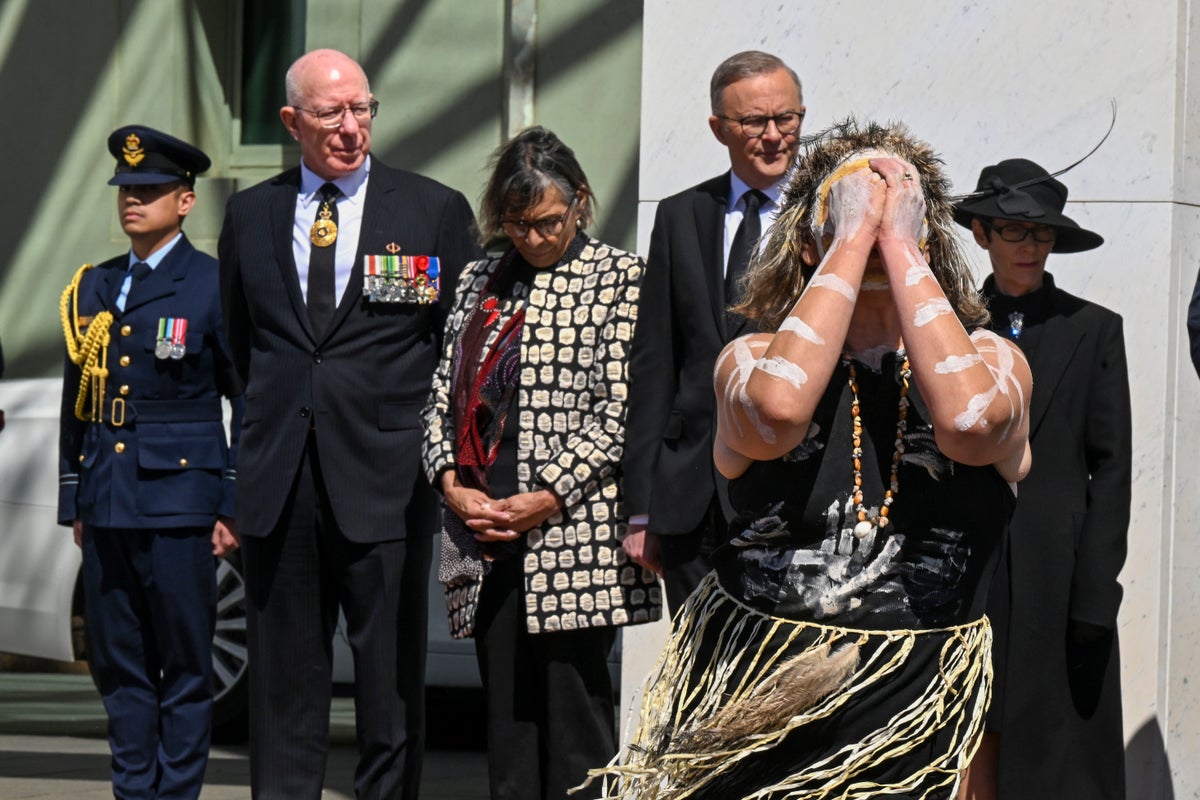
Australian prime minister Anthony Albanese has ruled out holding a referendum on whether to keep Britain’s newly proclaimed monarch, King Charles III, as Australia’s head of state. The announcement represents a reversal of his earlier policy, the groundwork for which his government began to lay when he was elected.
Rejecting holding talks on becoming a republic with its own head of state, the prime minister said it was a time not for change but instead for paying tribute to Queen Elizabeth II.
Mr Albanese said he would not “pursue questions” of constitutional change unless he was re-elected, out of “deep respect and admiration” for the Queen.
Ruling out holding a referendum in his first term, he told Australia’s national broadcaster, ABC, on Friday that “now is not a time to talk about our system of government”.
“Now is the time for us to pay tribute to the life of Queen Elizabeth; a life well lived, a life of dedication and loyalty, including to the Australian people; and for us to honour and grieve,” he said.
“Today’s not a day for politics,” Mr Albanese said in additional remarks to Radio National, even as citizens of several countries refused to mourn the Queen’s passing, with many openly expressing their intentions on social media through memes and jokes.
Mr Albanese’s announcement also comes as leaders of one of the country’s political parties, the Greens, have pushed for progressive constitutional change. Adam Bandt, the MP for Melbourne and a member of the party, expressed condolences on the death of the Queen in a post on Twitter, but also called for Australia to “move forward”.
Mehreen Faruqi, the party’s deputy leader, went a step further and called the Commonwealth “a racist empire built on stolen lives, land and wealth of colonised peoples”.
Indigenous Greens party senator Lidia Thorpe, while taking an oath in parliament last month, swore to “bear true allegiance to the colonising Her Majesty Queen Elizabeth II”.
Mr Albanese started laying the groundwork for an Australian republic after being elected in May. He had created a new position of assistant minister for the republic, and appointed Matt Thistlethwaite to the role in June.
Mr Thistlethwaite had earlier said there would be no change to Australia’s status in the Queen’s lifetime, while the prime minister had said the referendum was not a priority for the first three years of his term.
Speaking on Sky News, Mr Albanese said the Queen was “the only monarch we have known in my lifetime and the lifetime of most Australians”, and that he had held her in “high regard”.
Mr Albanese’s remarks are also in sharp contrast to those of his colleagues representing other Commonwealth countries. The prime minister of Antigua and Barbuda, Gaston Browne, declared shortly after the Queen’s death that his country would call a referendum “within the next three years”.
In March this year, official sources in Jamaica told The Independent that the country had already started the process of abolishing the Queen as head of state. The comments came as Prince William and Princess Kate, then the Duke and Duchess of Cambridge, toured the Caribbean and were greeted with widespread demonstrations against colonialism.
Mr Albanese will be travelling to London next Thursday to attend the Queen’s state funeral. He also announced a national public holiday on 22 September, and said he wanted the new King to visit Australia “as soon as possible”.
Australia, along with Canada and New Zealand, is among the 15 remaining Commonwealth countries of the former British empire. The others include Antigua and Barbuda, The Bahamas, Belize, Grenada, Jamaica, Papua New Guinea, Saint Kitts and Nevis, Saint Lucia, Saint Vincent and the Grenadines, Solomon Islands, Tuvalu, and the United Kingdom.
In 1954, the Queen became the first reigning monarch to visit Australia.
It is estimated that about 70 per cent of Australia’s population turned out to see her during her two-month itinerary with her husband, when they travelled to 57 towns. After that visit, she travelled to the country a further 16 times. Her final visit was in 2011.







